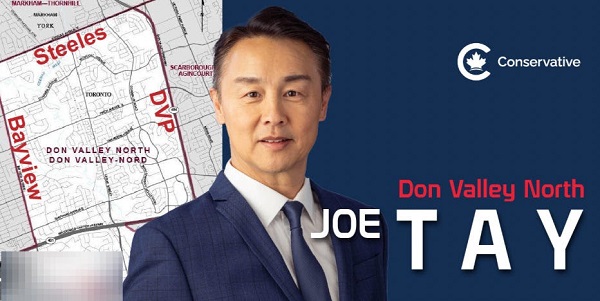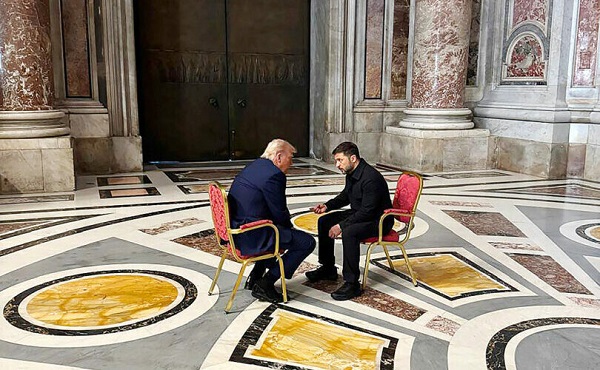Frontier Centre for Public Policy
The post-national cult of diversity promotes authoritarian intolerance
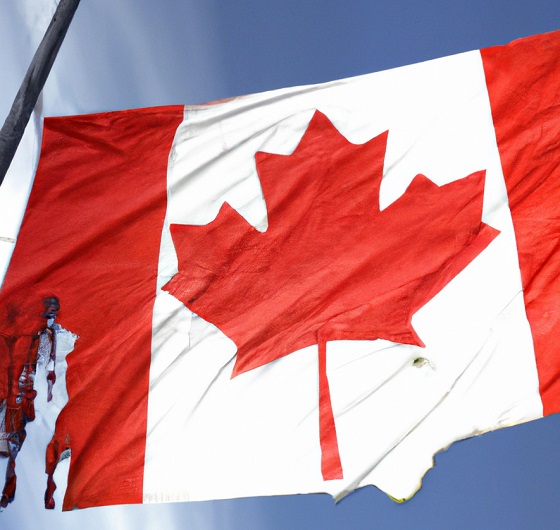
From the Frontier Center for Public Policy
“There is no core identity, no mainstream in Canada. … Those qualities are what make us the first post-national state.” — Justin Trudeau, 2015.
Throughout history, populations with sufficient historical, geographic, linguistic, economic, religious, and cultural attachments have flourished within the borders of unified nation-states.
Few modern nation-states fit a uniform definition. In countries such as Canada and the United States, two or more nations, regions, colonies, and tribes learned to prosper together within a negotiated constitutional order.
Not all nations insist on total sovereignty as a condition of their existence. Former Canadian Prime Minister Stephen Harper acknowledged this when he put forward a parliamentary motion recognizing that the Québécois form a historical “nation” within the united Dominion of Canada.
In 2006, Members of Parliament overwhelmingly supported Mr. Harper’s motion, but it was notable that Justin Trudeau, a rising star in the Liberal Party of Canada, regarded the recognition of a Quebec nation as an “old idea from the 19th century.” He said it was “based on a smallness of thought.”
For the cosmopolitan left, the period between November 2015 and November 2016 was a pivotal moment in history. A U.S. president who had rejected the idea of “American exceptionalism” and a Canadian Prime Minister who said his country had “no core identity” were in perfect accord with a growing cabal of international plutocrats who disapproved of nationalism and looked forward to the emergence of a borderless, new world order.
Globalists were convinced that a higher form of humanity could be achieved through a new trifecta of values known as “diversity, equity, and inclusion.” The only people standing in their way were pesky British Brexiters and Donald J. Trump.
Modern Origins of Anti-Nationalism
The post-modern left has always insisted that patriotism is a precursor to fascism. Since the late 1960s, Western intellectuals have deceptively linked nationalism and patriotism with the cultural values of Nazi Germany. For neo-Marxist intellectuals, affirming the merits of one’s nation is symptomatic of an authoritarian personality.
Following the fall of the Iron Curtain in the late 20th century, “global integration” became an increasingly popular vision among international policy experts. World Economic Forum patricians proposed a superior morality to be guided by a “Great Reset.”
The left insisted that problems such as climate change, inequality, racism, and poverty called for bold solutions. As a result, a “one-world government” paradigm came to occupy the center of academic thought. Universities in North America and Europe routinely advertised for positions in “global governance,” a term that few would have recognized a decade earlier.
The presumed genius of leaders such as Mr. Trudeau and President Obama promised to usher in a new era of diversity and inclusion that would make our world a kinder and gentler place.
The Old Diversity and the New
Over recent years, several scholars have adopted a more skeptical view of the post-national bromides being passed off as “diversity and inclusion.”
For example, University of Kent emeritus professor of sociology Frank Furedi argues that “diversity” is not “a value in and of itself.” He regards the present-day version of diversity as the foundation for a new form of authoritarianism.
In a January Substack article, Mr. Furedi pointed out that the meaning of diversity has been fundamentally altered.
This older form of diversity promised that the cultural freedom of local districts, tribes, races, religions, and immigrant communities could be respected within a justly established legal and constitutional order. It was a model that inspired the loyalty of citizens in modern nation-states such as the United States and Canada.
Post-national diversity means something entirely different. Mr. Furedi argues that “the current version of diversity is abstract and often administratively created. It is frequently imposed from above and affirmed through rules and procedure.”
He goes on to assert: “The artificial character of diversity is demonstrated by its reliance on legal and quasi-legal instruments. There is a veritable army of bureaucrats and inspectors who are assigned the role of enforcing diversity related rules. The unnatural and artificial character of diversity is illustrated by the fact that it must be taught.”
Dogmatic Diversity and the Decline of Freedom
Over the past 75 years, the left has promoted diversity as a remedy for discrimination. By the late 1960s, it had acquired a sacred importance. Mr. Furedi contends that “the main driver of this development was the politicisation of identity.”
He quotes the philosopher Christopher Lasch: “In practice, diversity turns out to legitimise a new dogmatism, in which rival minorities take shelter behind a set of beliefs impervious to rational discussion.”
Unfortunately, Mr. Furedi writes, “diversity has proved to be an enemy of tolerance.”
Radical proponents of diversity and inclusion reject debate and demand conformity. They have no qualms about limiting fundamental liberties, particularly free speech. The totalitarian temptations within this cult are akin to the impulses of an ancient creed or a communist dictatorship. No one is free to disagree, and there is little kindness in a dogma that has become the foundational value for 21st-century authoritarians.
Ten years ago, post-nationalist politicians such as President Obama and Mr. Trudeau found it easy to sell woke elites the same unfounded assumptions they had already acquired in university.
Today, free-thinking common folks are becoming considerably tired of serving the appetites of false prophets.
William Brooks is a Senior Fellow at Frontier Centre For Public Policy. This commentary was first published in The Epoch Times here.
Frontier Centre for Public Policy
Trust but verify: Why COVID-19 And Kamloops Claims Demand Scientific Scrutiny
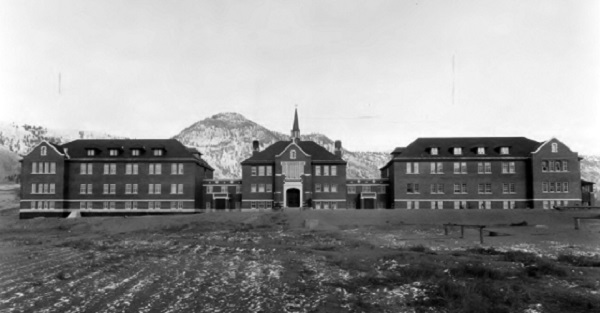
From the Frontier Centre for Public Policy
Senior Fellow Rodney Clifton calls for renewed scientific scrutiny of two major Canadian narratives: COVID-19 policies and the Kamloops residential school claims. He argues that both bypassed rigorous, evidence-based evaluation, favouring politicized consensus. Critics of pandemic measures, like Dr. Jay Bhattacharya, were wrongly dismissed despite valid concerns. Similarly, the unverified mass grave claims in Kamloops were accepted without forensic proof. Clifton urges a return to the scientific principle of “trust but verify” to safeguard truth, public policy, and democracy.
COVID-19 and Kamloops claims dodged scrutiny – but the truth is catching up
Do we know the best way to decide if specific empirical claims are true?
Of course we do. The best way is by using the procedures of science.
Scientists critically examine the arguments and evidence in research studies to find weaknesses and fallacies. If there are no weaknesses or fallacies, the evidence enters the realm of science. But if there are weaknesses, the research has low or zero credibility, and the evidence does not become a building block of science.
In a historical context, seemingly good evidence may not remain as science because claims are continually evaluated by researchers. This scientific process is not failsafe, but it is far better than other procedures for determining the truth of empirical claims.
This powerful principle is often called “trust but verify,” and it is the idea behind the replication of scientific results.
Today, many such truth claims demand critical examination. At least two come readily to mind.
The first is the claim that the COVID-19 procedures and vaccines were safe and effective.
It is now abundantly clear that the procedures used during the COVID-19 pandemic bypassed time tested scientific protocols. Instead of open scientific debate and rigorous testing, government appointed “scientists” endorsed government-approved narratives. Canadians were told to social distance, wear masks and, most importantly, get vaccinated—often without transparent discussion of the evidence or risks.
Those who questioned the procedures, vaccines or official explanations were dismissed as “deniers” and, in some cases, ridiculed. Perhaps the most notable example is Dr. Jay Bhattacharya, the Stanford epidemiologist and economist who co-authored the Great Barrington Declaration. Despite being vilified during the pandemic, Dr. Bhattacharya is now the head of the U.S. National Institute of Health.
Five years after the pandemic began, it is clear that Dr. Bhattacharya—and many other so-called deniers—were raising legitimate concerns. Contrary to the portrayal of these scientists as conspiracy theorists or extremists, they were doing exactly what good scientists should do: trusting but verifying empirical claims. Their skepticism was warranted, particularly regarding both the severity of the virus and the safety and effectiveness of the vaccines.
The second claim concerns the allegation that Indigenous children died or were murdered and buried in unmarked graves at the Kamloops Residential School.
In 2021, the Kamloops Indigenous Band claimed that 215 children’s bodies had been discovered in the schoolyard. The legacy media swiftly labelled anyone who questioned the claim as a “denier.” Despite millions of dollars allocated for excavations, no bodies have been exhumed. Meanwhile, other bands have made similar claims, likely encouraged by federal government incentives tied to funding.
To date, this claim has not faced normal scientific scrutiny. The debate remains lopsided, with one side citing the memories of unnamed elders—referred to as “knowledge-keepers”—while the other side calls for forensic evidence before accepting the claim.
The allegation of mass graves was not only embraced by the media but also by Parliament. Members of the House of Commons passed a motion by NDP MP Leah Gazan declaring that Indigenous children were subjected to genocide in residential schools. Disturbingly, this motion passed without any demand for forensic or corroborating evidence.
Truth claims must always be open to scrutiny. Those who challenge prevailing narratives should not be disparaged but rather respected, even if they are later proven wrong, because they are upholding the essential principle of science. It is time to reaffirm the vital importance of verifying evidence to resolve empirical questions.
We still need a robust debate about COVID-19 procedures, the virus itself, the vaccines and the claims of mass graves at residential schools. More broadly, we need open, evidence-based debates on many pressing empirical claims. Preserving our democracy and creating sound public policy depend on it because verifiable evidence is the cornerstone of decision-making that serves all Canadians.
Rodney A. Clifton is a professor emeritus at the University of Manitoba and a senior fellow at the Frontier Centre for Public Policy. Along with Mark DeWolf, he is the editor of From Truth Comes Reconciliation: An Assessment of the Truth and Reconciliation Commission Report, which can be ordered from Amazon.ca or the Frontier Centre for Public Policy.
Banks
TD Bank Account Closures Expose Chinese Hybrid Warfare Threat

From the Frontier Centre for Public Policy
Scott McGregor warns that Chinese hybrid warfare is no longer hypothetical—it’s unfolding in Canada now. TD Bank’s closure of CCP-linked accounts highlights the rising infiltration of financial interests. From cyberattacks to guanxi-driven influence, Canada’s institutions face a systemic threat. As banks sound the alarm, Ottawa dithers. McGregor calls for urgent, whole-of-society action before foreign interference further erodes our sovereignty.
Chinese hybrid warfare isn’t coming. It’s here. And Canada’s response has been dangerously complacent
The recent revelation by The Globe and Mail that TD Bank has closed accounts linked to pro-China groups—including those associated with former Liberal MP Han Dong—should not be dismissed as routine risk management. Rather, it is a visible sign of a much deeper and more insidious campaign: a hybrid war being waged by the Chinese Communist Party (CCP) across Canada’s political, economic and digital spheres.
TD Bank’s move—reportedly driven by “reputational risk” and concerns over foreign interference—marks a rare, public signal from the private sector. Politically exposed persons (PEPs), a term used in banking and intelligence circles to denote individuals vulnerable to corruption or manipulation, were reportedly among those flagged. When a leading Canadian bank takes action while the government remains hesitant, it suggests the threat is no longer theoretical. It is here.
Hybrid warfare refers to the use of non-military tools—such as cyberattacks, financial manipulation, political influence and disinformation—to erode a nation’s sovereignty and resilience from within. In The Mosaic Effect: How the Chinese Communist Party Started a Hybrid War in America’s Backyard, co-authored with Ina Mitchell, we detailed how the CCP has developed a complex and opaque architecture of influence within Canadian institutions. What we’re seeing now is the slow unravelling of that system, one bank record at a time.
Financial manipulation is a key component of this strategy. CCP-linked actors often use opaque payment systems—such as WeChat Pay, UnionPay or cryptocurrency—to move money outside traditional compliance structures. These platforms facilitate the unchecked flow of funds into Canadian sectors like real estate, academia and infrastructure, many of which are tied to national security and economic competitiveness.
Layered into this is China’s corporate-social credit system. While framed as a financial scoring tool, it also functions as a mechanism of political control, compelling Chinese firms and individuals—even abroad—to align with party objectives. In this context, there is no such thing as a genuinely independent Chinese company.
Complementing these structural tools is guanxi—a Chinese system of interpersonal networks and mutual obligations. Though rooted in trust, guanxi can be repurposed to quietly influence decision-makers, bypass oversight and secure insider deals. In the wrong hands, it becomes an informal channel of foreign control.
Meanwhile, Canada continues to face escalating cyberattacks linked to the Chinese state. These operations have targeted government agencies and private firms, stealing sensitive data, compromising infrastructure and undermining public confidence. These are not isolated intrusions—they are part of a broader effort to weaken Canada’s digital, economic and democratic institutions.
The TD Bank decision should be seen as a bellwether. Financial institutions are increasingly on the front lines of this undeclared conflict. Their actions raise an urgent question: if private-sector actors recognize the risk, why hasn’t the federal government acted more decisively?
The issue of Chinese interference has made headlines in recent years, from allegations of election meddling to intimidation of diaspora communities. TD’s decision adds a new financial layer to this growing concern.
Canada cannot afford to respond with fragmented, reactive policies. What’s needed is a whole-of-society response: new legislation to address foreign interference, strengthened compliance frameworks in finance and technology, and a clear-eyed recognition that hybrid warfare is already being waged on Canadian soil.
The CCP’s strategy is long-term, multidimensional and calculated. It blends political leverage, economic subversion, transnational organized crime and cyber operations. Canada must respond with equal sophistication, coordination and resolve.
The mosaic of influence isn’t forming. It’s already here. Recognizing the full picture is no longer optional. Canadians must demand transparency, accountability and action before more of our institutions fall under foreign control.
Scott McGregor is a defence and intelligence veteran, co-author of The Mosaic Effect: How the Chinese Communist Party Started a Hybrid War in America’s Backyard, and the managing partner of Close Hold Intelligence Consulting Ltd. He is a senior security adviser to the Council on Countering Hybrid Warfare and a former intelligence adviser to the RCMP and the B.C. Attorney General. He writes for the Frontier Centre for Public Policy.
-

 COVID-192 days ago
COVID-192 days agoCanada’s health department warns COVID vaccine injury payouts to exceed $75 million budget
-
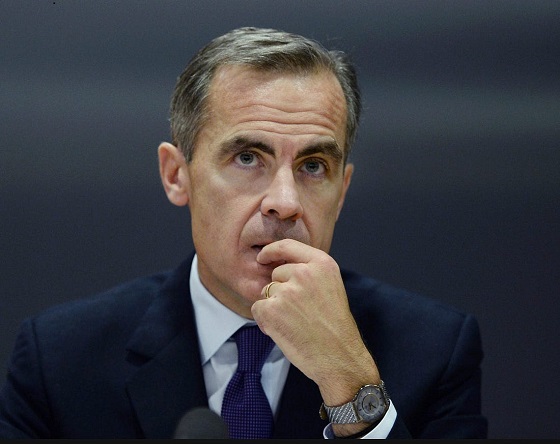
 espionage1 day ago
espionage1 day agoLongtime Liberal MP Warns of Existential Threat to Canada, Suggests Trump’s ’51st State’ Jibes Boosted Carney
-

 Business1 day ago
Business1 day agoNew federal government plans to run larger deficits and borrow more money than predecessor’s plan
-
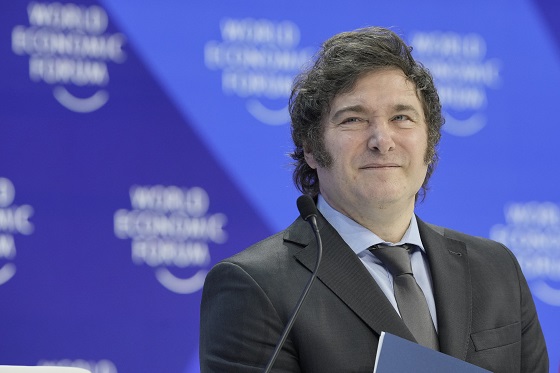
 International23 hours ago
International23 hours agoJavier Millei declassifies 1850+ files on Nazi leaders in Argentina
-
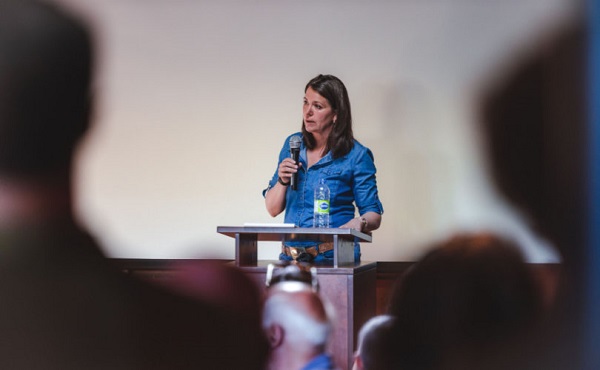
 Alberta2 days ago
Alberta2 days agoPremier Danielle Smith hints Alberta may begin ‘path’ toward greater autonomy after Mark Carney’s win
-

 Frontier Centre for Public Policy16 hours ago
Frontier Centre for Public Policy16 hours agoTrust but verify: Why COVID-19 And Kamloops Claims Demand Scientific Scrutiny
-

 Alberta1 day ago
Alberta1 day agoPreston Manning: Canada is in a unity crisis
-

 Mental Health1 day ago
Mental Health1 day agoHeadline that reads ‘Ontario must pay for surgery to give trans resident both penis and vagina: appeal court’ a sign of the times in Canada
